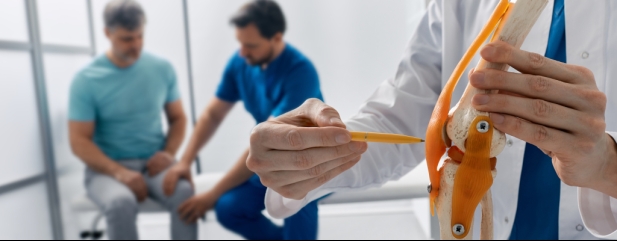Archived article
Please note that tax, investment, pension and ISA rules can change and the information and any views contained in this article may now be inaccurate.
Smith & Nephew management under big pressure to deliver on their promises

Medical device and prosthetics specialist Smith & Nephew (SN.) is one of those businesses which you think should do well because it operates in a market with demographics on its side.
An ageing population is likely to need an increasing number of knee and hip replacements, creating bigger demand for Smith & Nephew’s expertise. However, the company’s execution over the years has been patchy, particularly in its largest Orthopaedics division. Its other business units are Sports Medicine & ENT and Advanced Wound Management. The lack of consistent delivery is reflected in a share price which is pretty much where it was eight years ago.
In fairness the pandemic didn’t help. Elective surgeries were largely off the table as all the resources of global health care systems were directed at dealing with Covid. This was compounded by the impact of broad-based supply chain issues.
A year ago, the FTSE 100 company’s management team announced a 12-point improvement plan. Chief executive Deepak Nath, appointed in early 2022, outlined medium-term guidance on margins and revenue. Having been refined earlier this year, these now stand at revenue growth ‘consistently above’ 5% and margins of 20% by 2025.
Yet the latest set of results (3 August) from the company were decidedly mixed. Full-year revenue guidance was lifted by one percentage point to between 6% and 7%.
For the six months to 30 June the company reported a trading profit margin as a proportion of revenue which fell to 15.3% from 16.9% in 2022 due to higher marketing and input costs. A big improvement will be required to hit the guided full-year margin of 17.5%.
It was also revealed the company faces the disruption of the exit of its finance director Anne-Françoise Nesmes in the second quarter of 2024.
When the turnaround programme was launched the company’s senior leadership gave themselves some breathing space and said it would be a year before the market saw any tangible evidence of it working. That means there’s a lot of pressure to deliver in the second half of this year.
Berenberg analyst Sam England says: ‘With the company now one year into management’s 12-point improvement plan, we think the business needs to move from qualitative commentary to showing tangible evidence of delivery in its numbers.’
England adds: ‘Management noted at the H1 results that the plan is around 45% complete and the company’s margin bridge for H2 implies 140-plus basis points of margin improvement from productivity and 12-point plan cost savings in H2. As a result, the company has reached a point where it will need to deliver these savings or else miss expectations for 2023.’
Important information:
These articles are provided by Shares magazine which is published by AJ Bell Media, a part of AJ Bell. Shares is not written by AJ Bell.
Shares is provided for your general information and use and is not a personal recommendation to invest. It is not intended to be relied upon by you in making or not making any investment decisions. The investments referred to in these articles will not be suitable for all investors. If in doubt please seek appropriate independent financial advice.
Investors acting on the information in these articles do so at their own risk and AJ Bell Media and its staff do not accept liability for losses suffered by investors as a result of their investment decisions.
Issue contents
Feature
Great Ideas
News
- Pod Point powers down but hopes change at the top can recharge the shares
- Top fund managers continue to back the UK consumer amid record wage growth
- Two potential UK winners from the Tapestry-Capri luxury mega-merger
- Big breakthroughs on obesity and Alzheimer's make Eli Lilly world’s largest pharma firm
- Fresh ‘Spot The Dog’ research reveals big increase in funds failing to deliver for investors
 magazine
magazine








